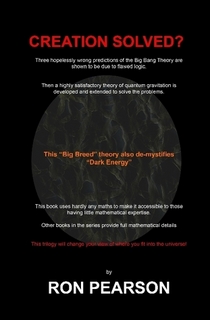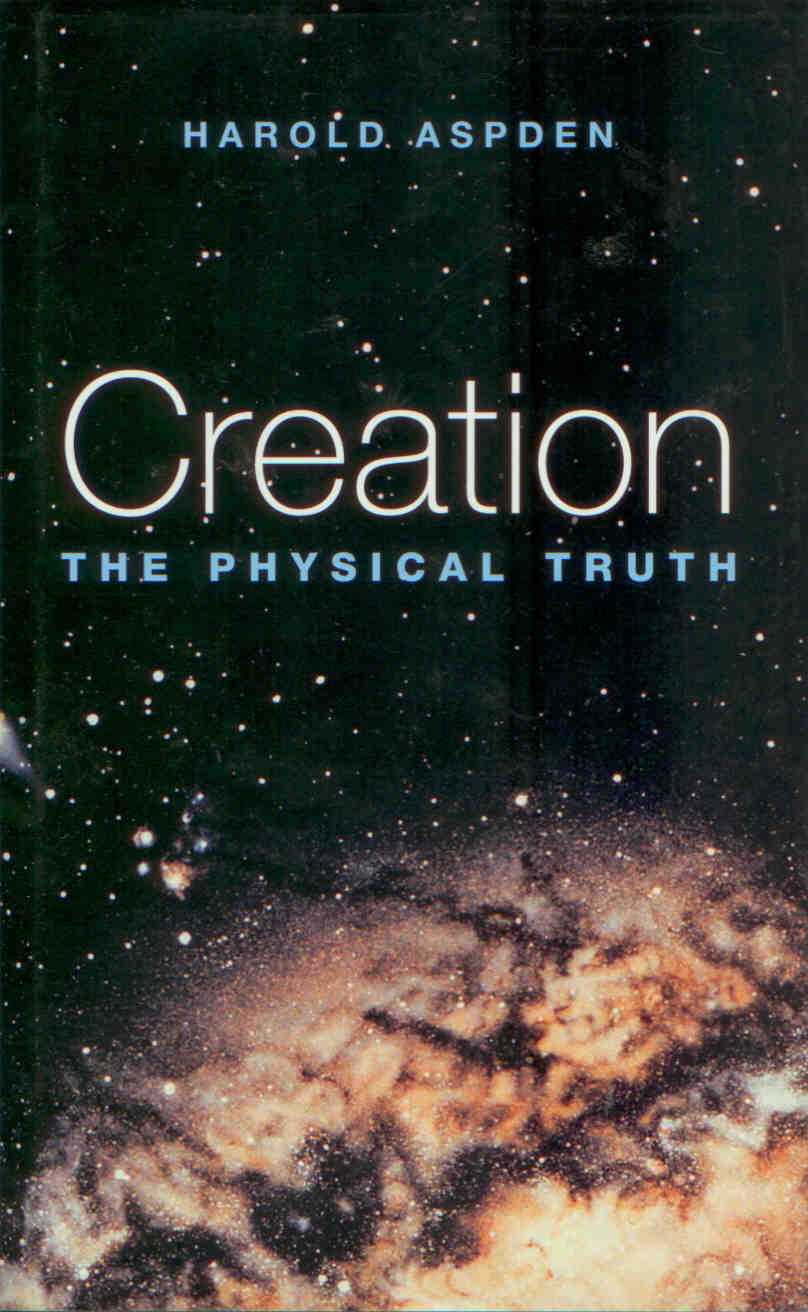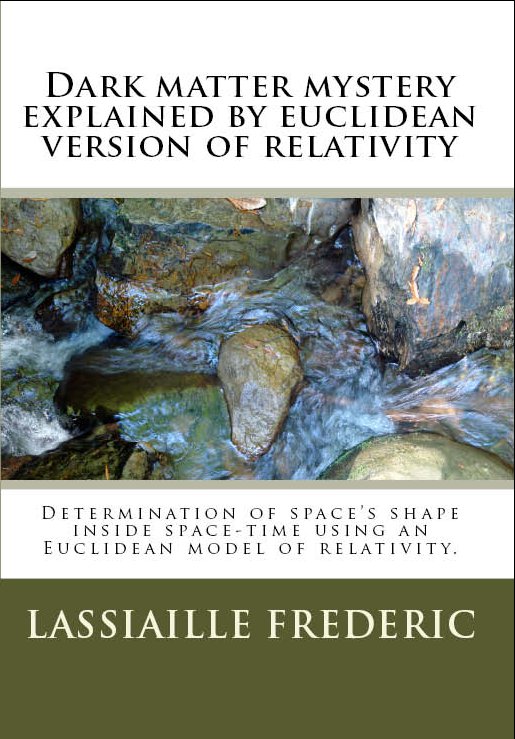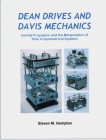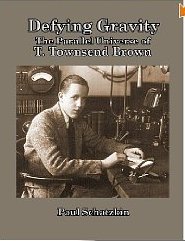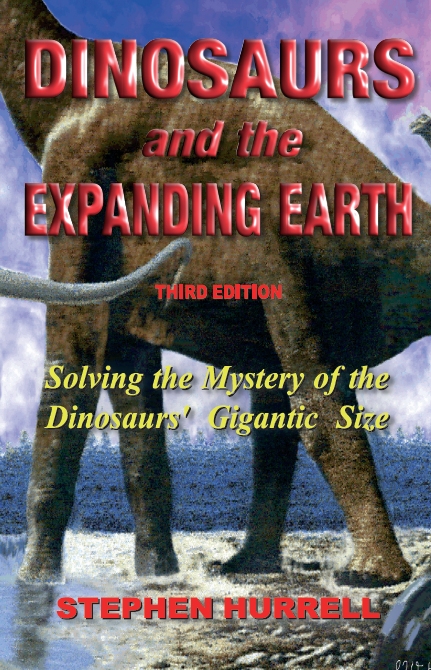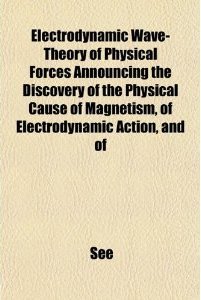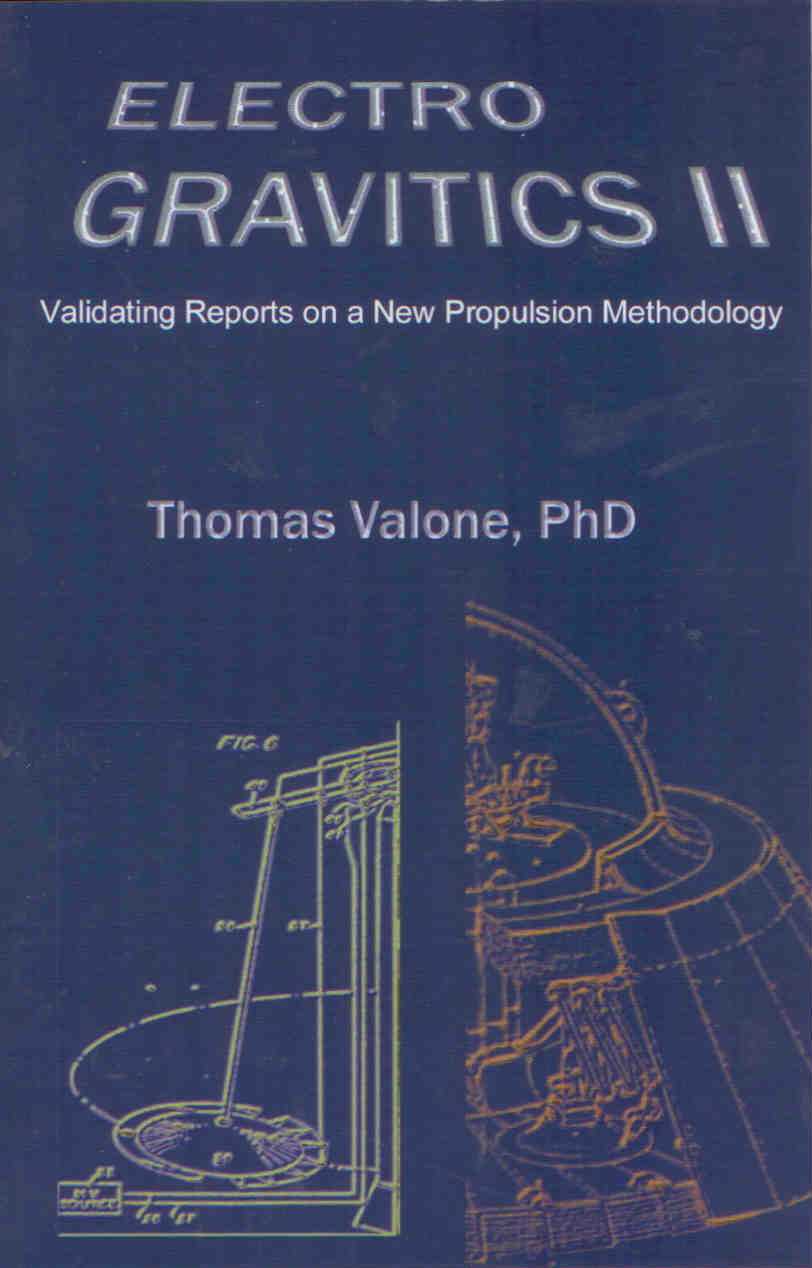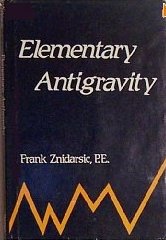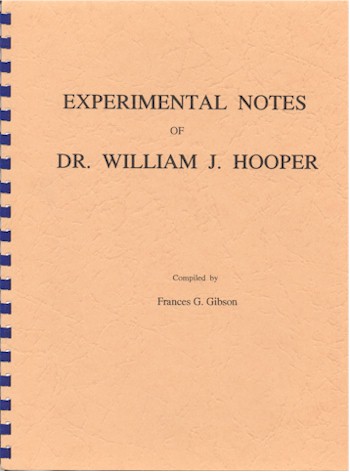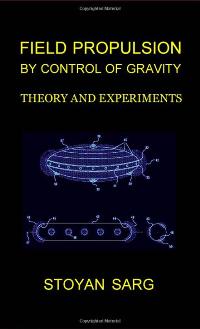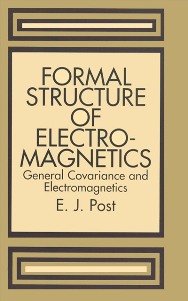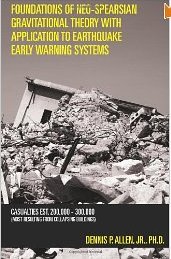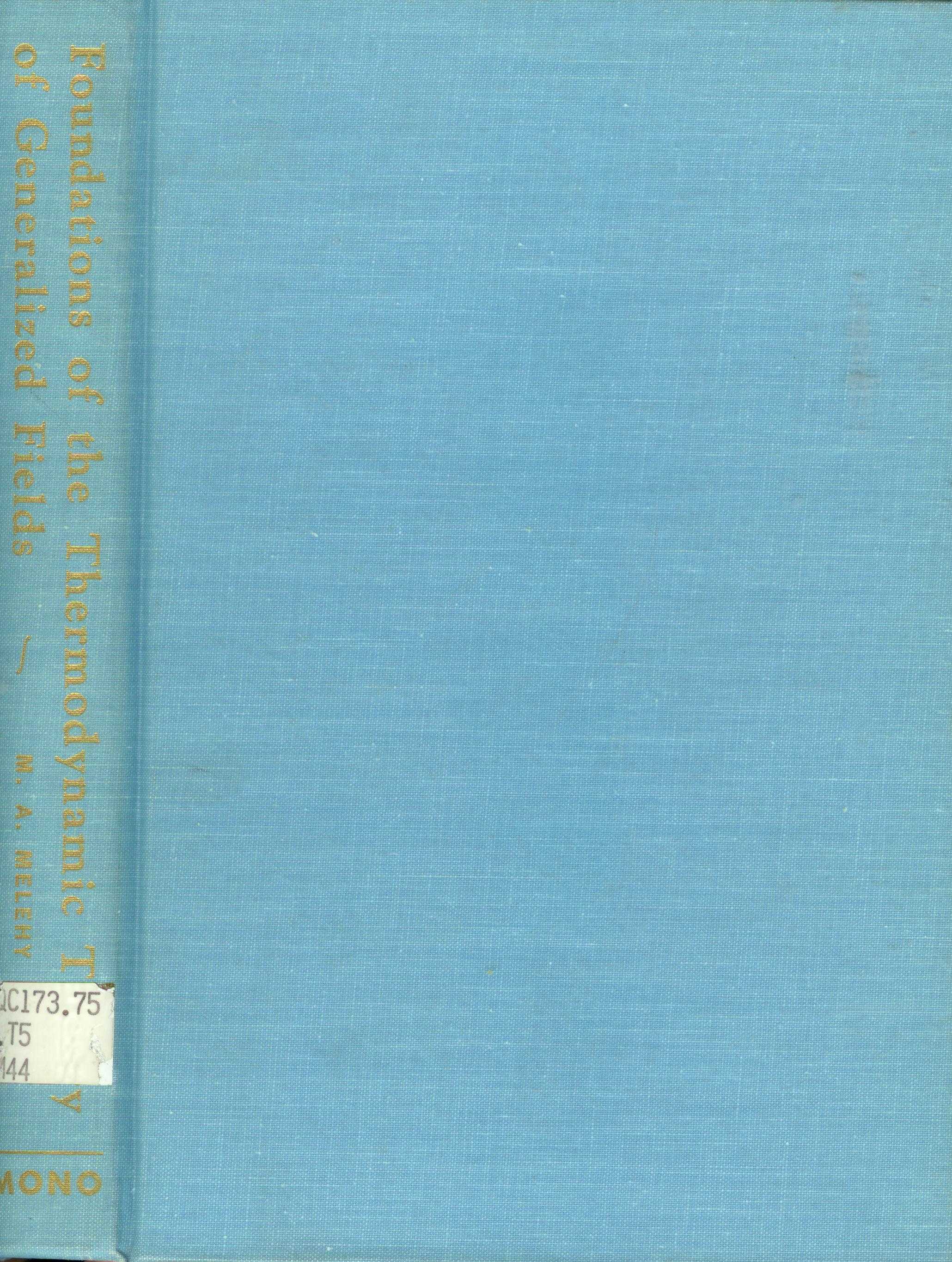(See right-hand panel for a full list of scientists, papers, and books)
Pages: 216
Publisher: Book Guild Publishing
Year: 2006
ISBN: 1846240506
ISBN: 978-1846240508
Websites: www.aspden.org peswiki.com/index.php/PowerPedia:Harold_Aspden
View count: 1
Pages: 120
Publisher: Quill Publications, Inc.
Year: 1993
ISBN: 096299331X
Websites: www2.econ.iastate.edu/tesfatsi/MFSpears/
Pages: 31
Publisher: CreateSpace
Year: 2010
ISBN: 1450524435
Websites: www.amazon.com
Download and read it now
Invented by Norman L. Dean in 1958 and proven mathematically viable by William O. Davis, Ph.D. in 1962, inertial propulsion (IP - also known as Impulse Drive, Inertial Engines, Inertial Drive and Centrifugal Force Engines) has now become a force to be reckoned with: Physicists can no longer turn their heads.
Hampton exposes the principles that make an eccentric Dean rotor propel its frame. Based on the Dean Drive - but not exclusive thereof - Hampton's latest invention the Reciprocating Impulse Drive RID), loses over 70% its weight while running on a floor scale. It also aggressively tilts a heavy balance beam against its own weight and holds its position. It can deflect itself from zenith hanging as a pendulum. His earlier prototypes not only led up to this powerful machine, but created the foundation for a hovercraft inertial engine design (complete with patent drawings) that could revolutionize transportation as we know it.
Find out why it's not just motion that governs this new physics, it's time. By isolating inertial frames, we can change time within parts of a cycle - in ANY cycle - opening vast avenues of research into multi-dimensional technologies.
Finally, Hampton describes in great detail a theoretical model for a "Free Energy" machine as well as a solid-state drive wafer (the Burnett Drive) both based on Dr. Davis's mechanics. A copy of Dean's two famous patents are included as two additional PDF files for easy reference.
This book is an intellectual adventure with startling surprises. E-book format only: printed out at 8 1/2 x 11 to 201 pp. with 53 color photos, 80 detailed illus. ? Steven M. Hampton ISBN 518 373.
Publisher: Paul Schatzkin
Year: 2009
ISBN: B00266OWY6
Websites: www.ttbrown.com/book/index.html
Unlike Alice's Adventures In Wonderland, this is not a fairy tale, though at times it seems like one. So perhaps it is fitting to begin by saying:
Once upon a time, there really was a person named T. Townsend Brown. We know his name. We know where he was born and where he was raised. We know who his parents were, his wife, his children and even his grandchildren. We know most of the places where he lived and there were literally dozens of them. We know where died, and where he is buried.
But that's about all we really know. Beyond that, the man is a ghost, a zephyr, a myth.
Most of the useful details about the life and times of T. Townsend Brown have vanished or been deliberately hidden. Behind a heavy veil of classified military research, covert intelligence operations, legendary experiments with flying discs, lost notebooks, unverifiable claims and fantastic possibilities, an incredible story lurks.
"The Universe is filled with magical things," wrote science fiction pioneer Eden Phillpotts, "patiently waiting for your wits to grow sharper." All the arrows in Townsend Brown's life point to just such a magical cosmos. Like stones hurled across the surface of a mountain lake in the early morning dew, the story points in the life of Townsend Brown all skip across the surface of our consciousness and disappear into a shroud of mist. But if we focus our vision just... so, and look into the mist with fresh eyes, we can see where the stone goes, and see the ripples from where it splashes.
Townsend Brown or, Dr. Brown a his many fans and those close to him still like to call him, despite his lack of academic credentials lived an extraordinary life, and it is time his story was told.
Somehow, the central mysteries of the past century nuclear physics, relativity, quantum mechanics, UFOs and the clandestine operations of the military industrial complex all appear to converge in the life of this one extraordinary man. The few minor accounts of his life already in circulation are largely filled with the sort of vague details that only amplify the mystery that surrounds him. It is time that some semblance of the larger picture however imperfect or incomplete be compiled. - From the Preface
Pages: 80
Publisher: Trafford Publishing
Year: 2006
ISBN: 1412029015
ISBN: 978-1412029018
Pages: 68
Publisher: Spur Dresden
Year: 2000
ISBN: 3980336069
ISBN: 978-3980336062
Websites: www.miriup.de/spur
View count: 1
Publisher: Oneoff Publishing
Year: 1994 - Reprinted 1996 & 2001
ISBN: 0952260301
The dinosaurs have been a source of wonder and fascination since they were first discovered. A large part of this fascination is their gigantic size, for they were the largest land animals to ever live, with even the smaller dinosaurs dwarfing the largest land animals of today. Although the gigantic size of the dinosaurs is obvious, the reason has remained a mystery for over a century. Why were the dinosaurs so huge?
In October 1987, whilst on a lazy holiday, I pondered on this question of the dinosaurs' gigantic size compared with present-day life. As a design engineer, I was particularly interested in calculations which showed that the bones of the larger dinosaurs were too weak to support their own body weight. Here was the essential paradox of the dinosaurs' large size. Their bones should buckle and crack. Yet the fossil bones in museums around the world showed that these giants had thrived in their own world of hundreds of millions of years ago. How can both of these statements be true?
There is one simple, yet astonishing, answer. The size of all life is controlled by gravity. A stronger gravity would tend to reduce the size of life whilst a weaker gravity would allow life to become larger. Dinosaurs may have become so huge because the earth's surface gravity was weaker than present.
The explanation is beautifully simple in its clarification of the dinosaurs' gigantic size. Using the concept of an increasing gravity allows a fascinating new world in which the gigantic animals of the past were forced to develop smaller sizes as gravity increased to the present day value. There can be no doubt that this size reduction of life has taken place. After the dinosaurs became extinct, a range of supergiant mammals reached the size of the smaller dinosaurs. Millions of years after them came giant versions of the animals of today. These died out within the last few million years to leave their smaller present day cousins.
Could gravity have been less in the past? My book is an attempt to explore the possibility.
Since the book's first publication I've been astonished at the number of people who have written to inform me that they had reached exactly the same conclusion. A reduced gravity during the Dinosaurs time would have allowed them to reach gigantic sizes. But they had not been able to explain how gravity has increased and so many of them abandoned the idea. Certainly the most difficult part to explain is not why gravity must have increased but how this increase has occurred.
In the book I offer a number of possibilities but I investigate one explanation in great detail. This is a concept that has been augured about for over 50 years - The Expanding Earth theory. I devote a whole chapter to the history of the evidence supporting the Expanding Earth theory. In other parts of the book I examine how an increase in size and mass of the Earth would result in an increase in the Earth's gravity. I explain how this gravitational increase can be calculated from the geological evidence for the Expanding Earth. The gravitational increase provided by these calculations is the same as that required to explain the gigantic size of the Dinosaurs! Is this just coincidence? I'll let you decide.
Pages: 218
Publisher: Oneoff Publishing.com
Year: 2011
ISBN: 9780952260370
Websites: www.oneoffpublishing.com
An explanation for the gigantic scale of prehistoric life
When Dinosaurs and the Expanding Earth was first published it proposed a startling idea to explain the long-standing puzzle of the dinosaurs? gigantic size. Stephen Hurrell presented scientific evidence that dinosaurs lived in a reduced gravity and this allowed them to grow to gigantic proportions. The Reduced Gravity Earth theory explains why all land-based life has shifted towards a larger scale on the ancient Earth. This includes gigantic dinosaurs, plants and insects. It is also a key piece of evidence that provides additional support for an Expanding Earth, something a few leading geologists have been suggesting for decades.
Since its initial unveiling, the Reduced Gravity Earth theory has been widely discussed and debated. Individuals from laymen to professors are now arguing that gravity was lower on the ancient Earth. You can analyse the evidence for believing the controversial Reduced Gravity Earth theory and its implications for the Expanding Earth in this third edition of Dinosaurs and the Expanding Earth.
Praise for previous editions of Dinosaurs and the Expanding Earth
?something completely different ... an original work rather than a re-presentation of existing knowledge ... well presented.?
GEOLOGY TODAY - Blackwell Science Ltd.
?Engineers (Hurrell) have shown that dinosaurs? bones could not have borne their weight ... much reduced surface gravity is essential for dinosaurs to have existed.?
Professor S. Warren Carey, University of Tasmania.
?? written in a plain straightforward style and its target is a wide public not interested in specialist treatises. Its clear and lively descriptions lead the reader straight to the core of the arguments. ? could well be the topics of joint scientific collaboration between engineers and paleontologists.?
ANNALS OF GEOPHYSICS
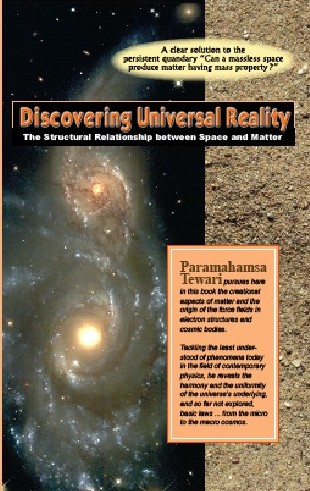
View count: 1
Pages: 126
Publisher: Paramahamsa Tewari
Year: 2008
Websites: www.tewari.org
Download and read it now
What if space was filled with a non-material but very dense fluid and matter was composed of 'holes' in that fluid? Visualize water as the omnipresent medium and tiny bubbles swirling around to eventually give form to everything that can be seen. You'd have an analogy of the way Paramahamsa Tewari, a nuclear engineer with a passion for physics sees the universe.
Tewari's Space Vortex Theory (SVT) explains universal reality in a radically different way from that proposed by physicists today. A new book titled Discovering Universal Reality is available from his site (PDF download - 1.3MB) or in print from Stonehill Foundation in Kerala, India (stonehillfoundation@asianetindia.com). Tewari summarizes and explains the principles of SVT in a way that is understandable to everyone. You do not have to follow his equations to get the gist of what is said.
According to Tewari's theory, there is only one basic, stable particle - the electron - which in combination of great numbers builds atoms and thus makes up all the matter we perceive. The electron is seen as a bubble in the fluid of space, created by circulation of the space medium. When that circulation exceeds the space medium's limit of cohesion, it leaves a tiny spherical void. The existence of this tiny void stresses the incompressible space medium creating the electrical and gravitational properties we associate with matter.
Light and heat are oscillations of matter but they are transferred through space by a wave-like disturbance of the medium of which matter consists. There are no "photons" to visualize as separate particles, merely successive expanding "shells" of a disturbance propagating through space with the speed of light - c.
To vizualize this, let's look at the sea shore. The waves of water (the medium) transmit a force to the pebbles at the shore, they move them, roll them around, and in time grind them into fine sand. But there is no particle doing all this work - merely the waves of the medium. And the medium of space is much more dense than water...
But I better let Tewari speak, lest I get carried away and inject too much of my own - in this case necessarily secondary - understanding of things. Tewari's views have revolutionary implications for our understanding of the universe and they will - if proven correct - allow us to gain a conceptual understanding of physical reality. What a change that would be from today's physics which has become an esoteric labyrinth of mathemathical constructions that - it is said - only the brightest (but really perhaps only the most convoluted?) minds can grasp.
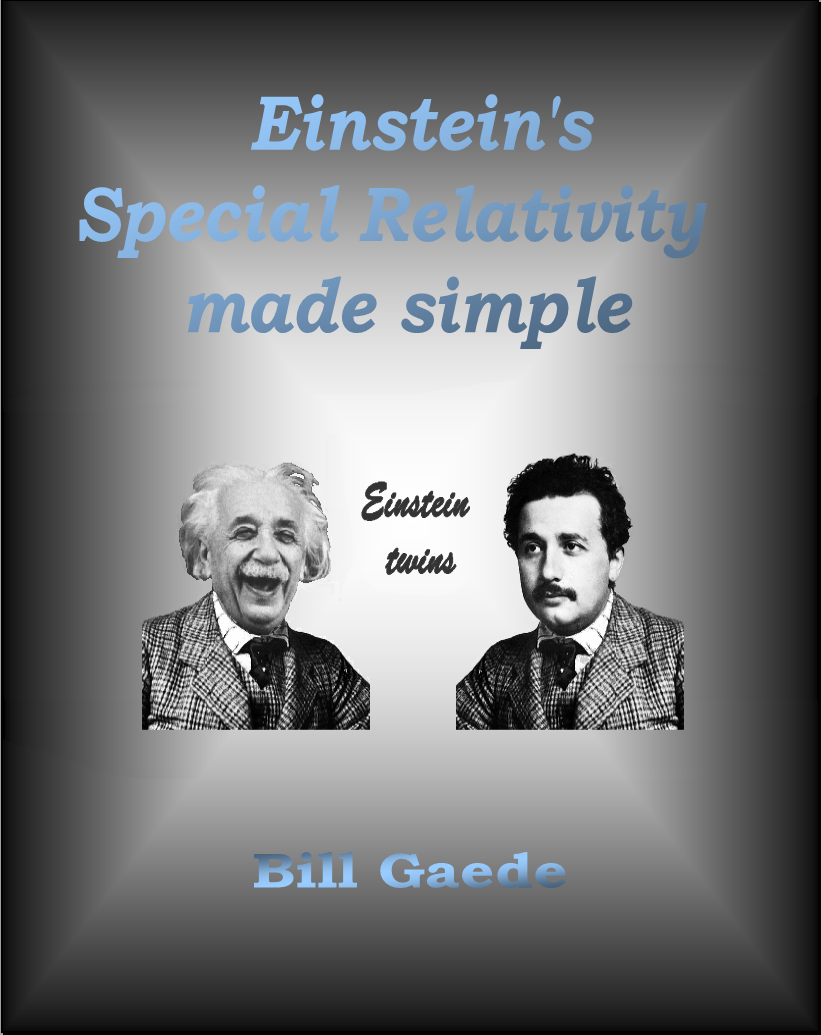
View count: 1
Pages: 158
Publisher: Thos.P. Nichols (Lynn, Mass.) / General Books LLC / Nabu Press
Year: 1917 / 2010
ISBN: 1152169955
ISBN: 978-1152169951
ISBN: B000UG746C
ISBN: 1171852290
ISBN: 978-1171852292
Websites: books.google.com
Pages: 160
Publisher: Integrity Research Instititue
Year: 2005
ISBN: 0964107090
ISBN: 978-0964107090
Websites: www.integrity-research.org
Pages: 102
Publisher: Integrity Research Institute
Year: 1995
ISBN: 0964107007
ISBN: 978-0964107007
Websites: www.integrity-research.org
This book by Tom Valone, with significant input by Dr. Paul LaViolette, is just what is needed to orient oneself on the hot topic of "electrogravitics"?apparent anti-gravitational and thrusting effects stemming from electrical phenomena pioneered by T. Townsend Brown. Includes significant historical documents that bear on government and corporate involvement in this area. - Infinite Energy
Leslee Kulba, Electric Spacecraft Journal, Issue 12, 1994, p. 37
Having made a theoretical case for electrogravitics, the book also makes an historical one. Hints of electrogravitics in the history of aviation, revealed through the developments and statements made by major aircraft industries in articles from the Aviation Report in the mid-1950s, are reprinted. T.T. Brown's work is described in detail. The paper by Paul LaViolette was an intriguing speculation that the B-2 stealth bomber operates on T.T. Brown's principle of propulsion. Statements from government and ex-government workers and officials were shown to fit nicely with this possibility...This book can be appreciated by anyone who is interested in electrogravitics.
Vincent Coon, New Energy News, Vol. 2, No. 5, Sept., 1994, p. 10
In the early 1920's Dr. Paul A. Biefield, a physicist and adquaintance of Albert Einstein, working at the California Institute for Advanced Studies, discovered that a highly charged capacitor has an anomalous tendency to move in the direction of its positive pole. Biefield assigned Thomas Townsend Brown, his prodigy, to study the phenomena as a research project. That the effect is not due to ion wind is borne out in claims that the effect exists under insulating oil and high vacuum...T.T. Brown devoted considerable effort, time, and means to researching this effect. Although his work has been sensationalized, it also has attracted professional attention. "Electrogravitics Systems: Reports on a New Propulsion Methodology" edited by physicist Thomas Valone, MA, PE, is a currect and cogent anthology of reports on the electrogravitic research of T.T. Brown.
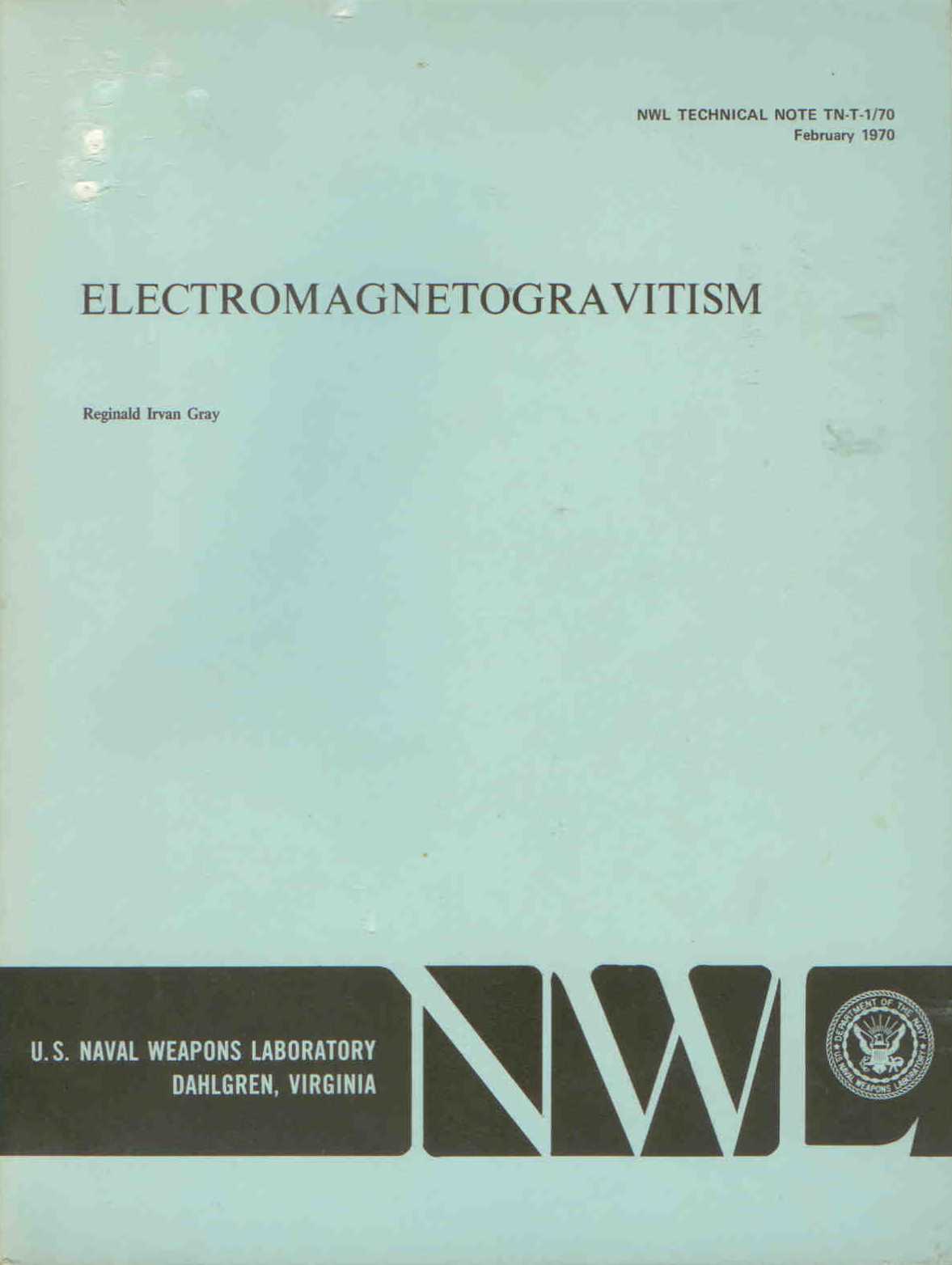
View count: 1
Pages: 53
Publisher: Vantage
Year: 1989
ISBN: 0533083346
ISBN: 978-0533083343
ISBN: B00071TNVO
There are two schools of thought as to where we are heading. The first school of thought, as foreseen climate scientist James Lovelock, predicts that we are rapidly heading towards a global catastrophe. The disaster will be triggered by the triple whammy of climate change, population increase, and the depletion of the fossil fuels. Lovelock?s Gaia Hypothesis predicts that it is already too late. According to Lovelock, within this Century, the only places on Earth that will be inhabitable will be at the poles. He advises, ?Enjoy life now while you can!? The second school of thought, as foreseen by Peter Diamandis, predicts that we are heading into an age of abundance. This age will be ushered in by a rapid increase in the capabilities of computer and medical technologies. Fred Pearce in his book, ?The Coming Population Crash?, has revealed that societies, that a respect a woman?s rights and provide for child care, tend to maintain stable populations. Indeed the dire predictions presented by Paul Ehrlich, in his 1968 book, ?The Population Bomb?, did not come to pass.
Frank Znidarsic believes that the age of abundance can acquired, but only through the development of new, non-polluting, and abundant energy sources. The classical harnessing of the electromagnetic force has propelled us into this current age of wonder. Frank Znidarsic showcases the emerging new technologies will classically harness all of the natural forces. The new space propulsion technologies, that are coming, will provide resources from beyond the bounds of Earth. These technologies will propel us to the stars and lead us to the abundance of Peter Diamandis? singularity. ?Elementary Antigravity II? reveals what is happening with this effort. It presents the science that will achieve this goal. The techniques that are presented within this text should expedite the coming of the desired singularity.
INTRODUCTION TO EXPERIMENTAL GRAVITONICS
Abstract by book of S.M.Poliakov and O.S.Poliakov
For the first time a book has been published as a helpful guide in conducting laboratory investigations in the field of gravitonics. The book treats problem of creating high power soerces and sensitive receivers of gravity.
The authors develop an original phenomenological theory of gravitational-radiation sources based on a physical micro-structural model of the classical electron in rest state. This theory allowed to obtain simple analytical equations relating magnetism to gravitation and gravitation to retation of a material object.
It is demonstrated that radiation is a PROPERTY OF NONSTATIONARY SYSTEMS ONLY WHICH POSSESS A TIME-VARIABLE PARAMETER.
The equations thus obtained have been verified in a series of many-year experiments and may be recommended for use by practical specialists. The experiments part covers the following subjects:
- Light-beam curvature and optical-radiation frequency shift is created and investigated in an artificial nonhomogeneous gravitational
field. A new gravitational effect, named "quadrature" frequency shift in the curved light beam is predicted and calculated. - Magnetostriction is at last explained as a secondary gravitational effect. An equation derived for magnetostriction permits to calculate the magnetostriction curve.
- The propagation velocity of gravitational radiation (generated by a laboratory source) was measured for "quadrupole" - 9x10E20 cm/s or squared light velocity.
- It was demonstrated that gravitation is only one of NONLINEAR-MECHANICS EFFECT, that can be created in mechanical system or in ferromagnetic.
The book was published at the author's expense in 1991. Most powerful experimental result described in this book is more than 1200 gramms of pulsed G-force. Several mechanical systems and systems using ferrites are detailed here. Second edition in English is ready for copy process (disket's text).
Publisher: 21st Century Books
Year: 1991
Websites: www.tfcbooks.com/mall/more/565-hen.htm
These experimental notes of Dr. William J. Hooper are being published at this time because all patents on the device used in these experiments have run out, and because I still believe in the validity of Dr. Hooper's theory and work. I believe that when the time comes that his theory is proved and made useful, it will be the start of a new era for mankind.
These notes will be of no value unless the reader has a copy of either Dr. Hooper's original work, New Horizons in Electric, Magnetic and Gravitational Field Theory, or my summary of his work, The All-Electric Motional Electric Field Generator and Its Potential.
View count: 1
Chapters:
- Why can't anyone give us a Theory of Everything?
- What went wrong
- One more even worse problem
- Local gauge invariance
- Fitzpatrick's "A" laws
- Chemical Bonding
- Einstein's cosmological constant; the electron's charge and a bit more
- Ferromagnetism
- The big picture
- Gravity and the "bad quarter"
- Transformers, motors & generators
- Various other forms of magnetism
- Inertia & angular momentum
- Steady-State plus de Broglie
- Proof of Einstein's principle of equivalence using the "A" Laws
- Light & Planck's constant
- Einstein's gravity wave prediction
- Space-time & Who are you?
- Einstein called this his "Biggest Blunder".
- Tiny Clusters of Matter
- Summing this all up
- Getting away from the subject
Pages: 224
Publisher: Dover Publications
Year: 1962 / 1997
ISBN: 0486654273
ISBN: 978-0486654270
"I discovered (Post's) monograph "The Formal Structure of Electromagnetics" in which I saw the first definitive treatment of the Faraday effect, and its non-reciprocity. This idea was what I had been searching for, for if an experiment between EM and gravity was to work, it would have to accumulate data - like the Faraday ratchet - in order to measure very small effects. The Jacksonian version of EM theory (does) not come close to explaining the features that were so clear in Post's expose. I used to call the small book, the "Tourist's Guide of Electromagnetism". The book is back in print now (Dover), and no one interested in EM should be without it." - Robert Kiehn
Pages: 51
Publisher: CreateSpace
Year: 2011
ISBN: 1456533835
ISBN: 978-1456533830
Pages: 255
Publisher: Mono Book Corp.
Year: 1973
ISBN: B0000EGCI1
ISBN: B000UEIU4Y
Kirchhoff?s current law follows simply from the law of conservation of charge: In a node, charge cannot just disappear. It is obvious that this current law can be generalized. It then stands for conservation of mass, energy, and charge. Kirchhoff?s voltage law can be generalized by considering the work done by the electrical, gravitational and pressure forces on a specific flow component (say one kind of molecule, atom or ion) which goes around a closed loop. This approach provides one equation for every type of particle for every loop one can devise. Melehy's laws thereby completely specify all possible solutions with given boundary conditions.
How is it possible that this general mathematical description of such a large class of physical and chemical phenomena has escaped us for so long? The reason may be that Melehy's formulation requires two new artifacts which are not immediately obvious, although they are quite natural once understood: For the pressure P in analogy to the voltage in an electric network, it is not suitable to take the external pressure as indicated on a manometer. Instead, the pressure Pj of a component j has to be defined as the transfer of momentum, by the particles of j through I cm2/sec. So, for instance, the pressure in a homogeneous liquid is much higher than its equilibrium vapor pressure. This definition of Pj does describe the osmotic pressure of a solute in a liquid.
The second artifact that Melehy's theory needs is to describe the increase of heat )Q in a volume element as )Q = T )S. In this way T becomes a generalized potential for entropy S as voltage is for charge: v )e, gravitational potential is for mass: hg )m, and Pj is for volume: Pj )V. At first sight this may seem positively wrong: We know that if, for instance, in a certain volume element of the low process low pressure helium and hydrogen gases mix by diffusion, there is an increase of entropy, but there is no increase in heat as a consequence.
In fact, these two innovations in Melehy's formulation are quite natural if one considers how one can arrive at a proof of his laws in analogy with a proof of Kirchhoff?s voltage law. For a proof of Kirchhoff?s law, let us consider in an electric network a specific resistance r1, carrying a current i1, and consequently with a voltage difference v1 = i1 r1. Let us now replace this component on paper with an imaginary component consisting of two elements in series. One element is a small resistance arl, while the second is a battery with emf v = i1 r1 (1 -"). This imaginary component, carrying the same current il, also has the same associated voltage v, as the real one. In the same way we now replace all resistors rj in the network by imaginary components arj in series with batteries with emfs of i1r1 ( I -"). In this resulting imaginary network, all currents and voltages are identical with those in the real one. For " �� 0, the imaginary network becomes a reversible process, consisting only of the charging of batteries. No heat is developed, and conservation of energy now demands that Kirchhoff's voltage law holds.
Analogously, if we wish to prove Melehy's law for a general thermodynamic process, we can consider the flow of a specific component in a small part of space. We replace this element for the major part (I - ") by the analogy of the battery, that is, a reversible heat engine. We do the same for all parts of the process. Then for " �� 0, conservation of energy gives us Melehy's law for generalized fields. Now )Q = T)S begins to make sense, even in the case of mixing hydrogen and helium. The imaginary )Q in the real irreversible flow process reflects the real )Q which is trans- formed into work in the imaginary reversible process.
It has been thought that Melehy's theory of generalized fields is just another formulation of what is known as "irreversible thermodynamics." This is incorrect, because the essence of the latter is Onsager's theorem. This theorem says that if in a stationary flow pattern the equations are linear, that then the impedance matrix must be symmetric. But already in a simple example, an electrical network, the resistors are heated up by the currents, making the currents nonlinear with the voltages. In Melehy's formulation this nonlinear situation is completely taken care of, because the heat production yields additional equations for the heat flow which have to be satisfied.
The discussion given above of Melehy's law requires both the first and second law of thermodynamics. Conversely one can say that the statement of the theory of generalized fields in its quantitative form is an independent statement of the foundation of thermodynamics which implies the first and second law, but is more detailed. Melehy also makes an effort to draw the third law of thermodynamics in his formulation. He does this by considering a flow process in a four dimensional abstract space in which the fourth dimension is the absolute temperature T. The content of the third law can now be incorporated by the statement that in a flow pattern in this space, for that part of the flow that is at absolute zero, )Q must be zero. Whether this will lead to new results for thermodynamics near absolute zero is too early to judge.
Melehy is a professor of electrical engineering at the University of Connecticut. A large part of the book's applications of the theory of generalized fields is on current- voltage characteristics of semiconductor diodes. The difficulty here lies in knowing the accompanying space charge distribution. One method of calculating these curves has been to calculate first the space charge for zero current, and then to hope that this distribution will not change too much when currents are drawn. In the book Melehy calculates many curves with his theory, and always finds a very good correlation with existing experimental results, even over a range of ten orders of ten of current. The book also contains a calculation on the temperature dependence of the vapor pressure of mercury. The theoretical curve, with the aid of two matching points, accurately fits the experimental results over nine decades of vapor pressure values.
It will be very interesting to see the theory applied in physical chemistry to batteries, fuel cells, and other stationary chemical. reactions. Also, in astrophysics and meteorology, the application of the theory to the movement of matter on a large scale seems promising.
Melehy has written his book as a text book, requiring a background which may be expected of students majoring in physics and electrical engineering. His style is simple and to the point. The prerequisites are some advanced calculus, the laws of electric circuit theory and the elements of thermodynamics. The book contains short introductions to vector analysis and electricity and magnetism. It also has ample references to the literature at the end of each chapter. Problems for the students are provided. The printing of the text, mathematical formulae and figures is pleasant to the eye. However, the book is not easy. Getting to the real physical content of a new theory is always hard work. This is true for any introduction to classical mechanics, and it is also true for Melehy's introduction to the thermodynamic theory of generalized fields. The practical examples given by the author are not necessarily the ones the reader is familiar with; he will have to supplement Melehy's examples with his own. There is no easy way to understand new ideas, even when the consequences of these ideas are very practical.
- Pieter J. van Heerden, American Journal of Physics, V44, N9, pp. 895-896 (Sep 1976).


